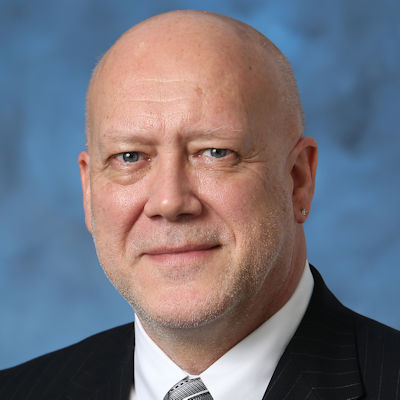
Bad business writing is everywhere, and it is something up with which we should not put.
By Gregory F. Treverton, Ajay Patel, and Dick Eassom
And crisp writing is not that hard, for happily English is not German, which moved Mark Twain to quip: “Never knew before what eternity was made for. It is to give some of us a chance to learn German.” A friend once described the difference between English and German: English is an easy language to speak badly, but the gap between speaking—and writing—it badly and well is large; by contrast, German is a hard language to speak badly, but once spoken badly the gap to speaking it well is not so large. This brief note aims to shorten that gap for writing English.
Here are a few tips, in no particular order:
- Provide clear structure. This especially applies to anything longer than a page or two. Begin with a para or two that clearly lays out the topic, why it’s important and what the shape of your argument will be. Not quite the military’s “tell ‘em what you’re going to tell ‘em, then tell ‘em, then tell ‘em what you’ve told ‘em.” But close. The final para should be a quick recap.
- Use subheadings, again especially for longer pieces. These guide the reader and can reinforce your main points, thus ones with a substantive point are better than “introduction” or “conclusion.” If you’re responding to a Request for Proposal (RFP), embed “road signs” in your subheadings and text using keywords from the solicitation to highlight the location of your answer.
- Avoid passive voice. Active voice is simpler, more direct and believable, and more forceful and self-confident. The basic structure of any sentence is subject-verb-object. Generally, the more active the verb, the better. For example, “US companies manufacture millions of precision machine tools” vs. “Millions of precision machine tools are manufactured by US companies.”
- Avoid generalizations. Good business writing is data rich, deals in particulars, and presents the details that matter. For example, “Unfavorable weather delayed the launch” vs. “Winds over 50 knots delayed the launch for three days.”
- Work hard on the thesis sentence, the first in the paragraph. Too often the first sentence is a catch-all (or worse CYA): “The result derives from multiple factors….” Too often the real topic sentence is the second one in the paragraph: “Price was decisive…” Let the following sentences support the thesis sentence in that paragraph.
- One is enough for verbs and adjectives. If we read one more paper that says “developed, built, and sold,” we will scream. Where we come from, it’s hard to sell it if you haven’t built (or bought) it. Most of the double (let alone triple) adjectives result from simply not taking the time to pick the best one. If a thing truly has contrasting attributes, then two adjectives are okay, but they should be separated by a comma or, better, a word to emphasis the contrast, as in “strong but supple,” not “and.”
- Avoid list-omania. Another that drives us to drink if not screaming. No “Trend x derives from x, y, z, a, b, and c.” Never.
- Avoid acronyms. Sadly, the Pentagon, and government in general, are an acronym factory. Sometimes the results are hilarious: the State Department once had a program to move officers around, the Global Outlook Program, and officers would speak of having been “GLOPed.” Or the European Union devised a Concerted Reflation Action Program (perhaps the acronym was more dignified in French). In any event, too often the acronyms are incomprehensible, especially if they come in a blizzard.
- Omit needless words. Just as a machine should contain no unnecessary parts, your writing doesn’t need unnecessary words. For example, “in order to” vs. “to,” or “in conjunction with” vs. “with.”
- Do use short sentences. Be suspicious when any sentence gets to ten words and more than two clauses. Occasional four-word sentences are like a slap in the face; they get your attention. Treverton learned that from his great mentor and friend, Richard Neustadt. Similarly, keep paragraphs to 3–5 sentences, and vary sentence and paragraph length to keep the content lively.
- Prefer Anglo-Saxon. Another lesson Treverton learned from Neustadt. English is a wonderful combination of Anglo-Saxon and Latin roots, about half and half. The Anglo-Saxon words tend to be shorter and punchier than the Latinate ones, often one syllable: came vs. arrive; see vs. observe; hard vs. difficult. If we could make autocorrect be language police, it would correct any use of “prioritize,” which sets teeth on edge, to “rank.”
- Gerunds are better than complicated nouns, as in “deploying missiles signaled…” vs. “the deployment of missiles signaled…”
- Put effort into your verbs. To be or not to be? But not two be’s. Don’t be be! “Be” verbs such as am, are, or is indicate a state of being and douse the flames of passionate, memorable writing. If you have to use a “be” verb, only use one per paragraph.
- Repetition is repetitious. Using the same word to start consecutive sentences is monotonous. To help create rhythm in your writing, try to have no two sentences start with same word in the same paragraph!
- Speak what you want to write. Since people tend to speak much more directly than they write, this is an antidote, perhaps especially for recovering—or worse, unrecovered—academics, to the tendency in writing to get trapped in a maze of long, complicated sentences.
Winston Churchill said of Americans that they could always be counted on to do the right thing…after trying every other alternative. So, if things get desperate, writing-wise, you might do the right thing and get some training. SMA has a good online training course, geared to writing for proposals. It’s available to all our clients and associates for free. If you’re not yet signed up, go to our Talent on Demand (TOD®) system at tod.smawins.com, create your profile, and click Learn Online. We’ll even give you a certificate when you complete the course! (and you can search for talent, precision matched to your program needs, while you’re there!

